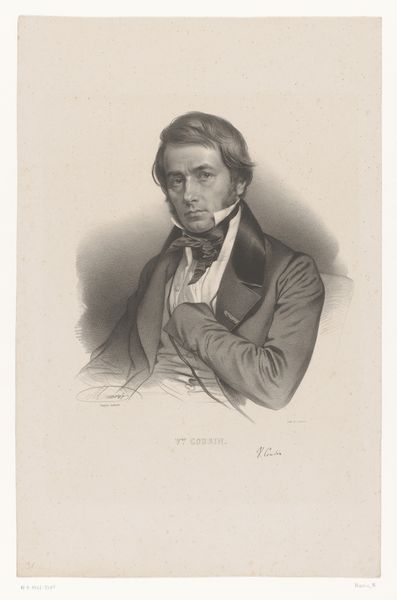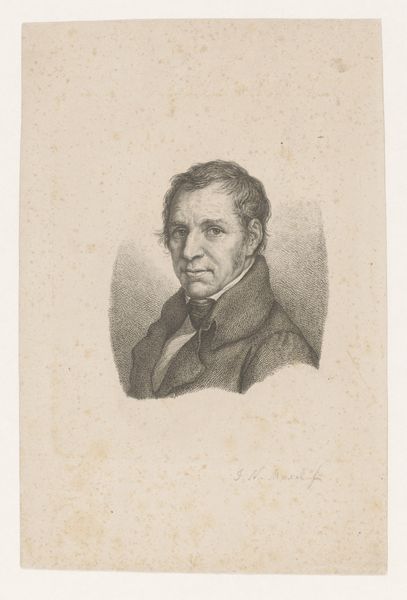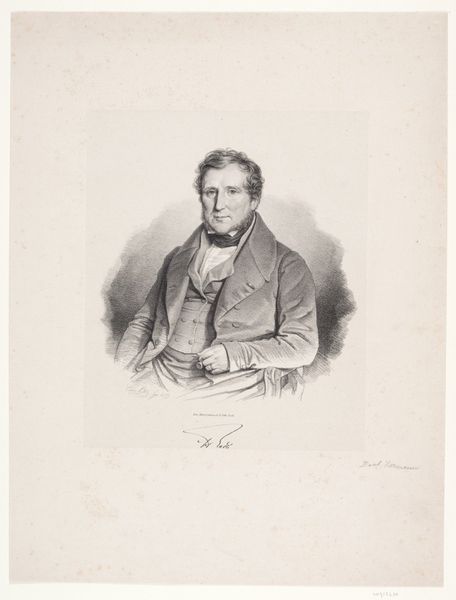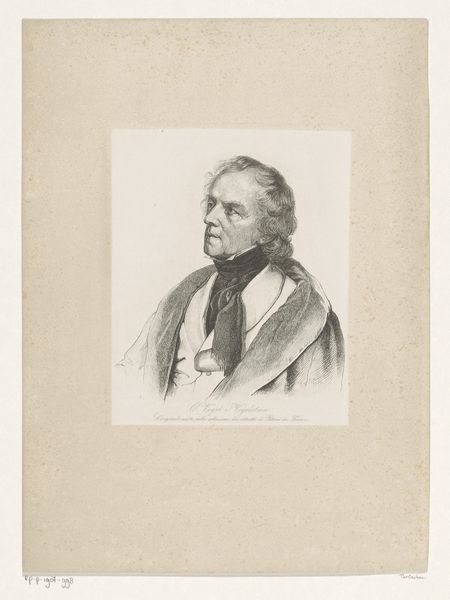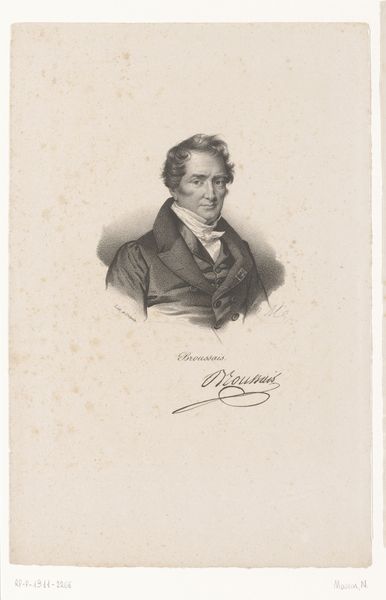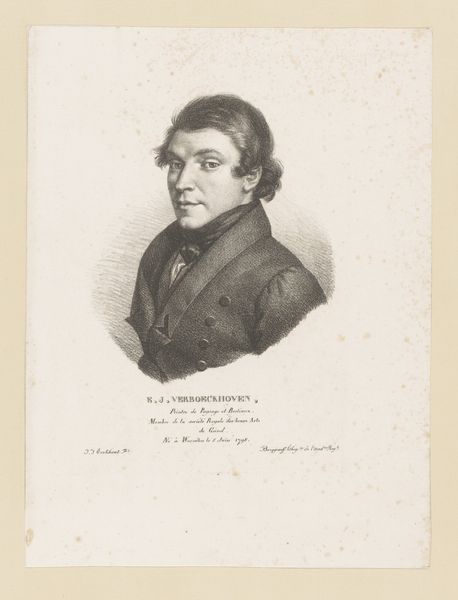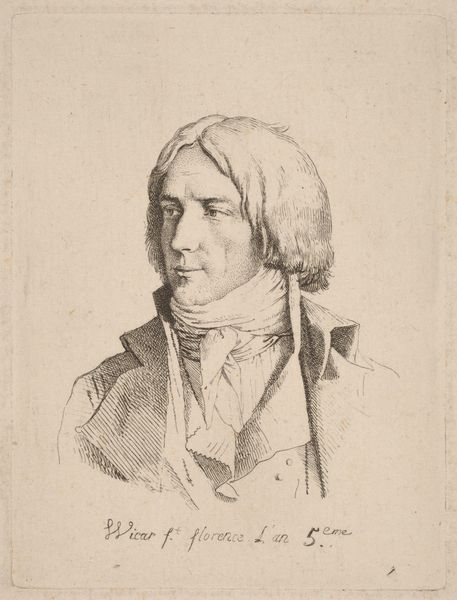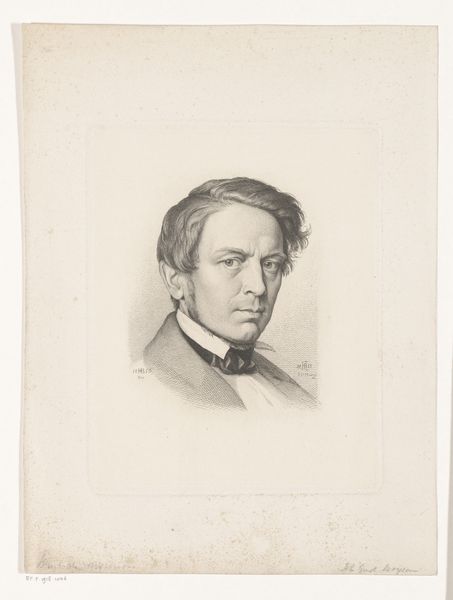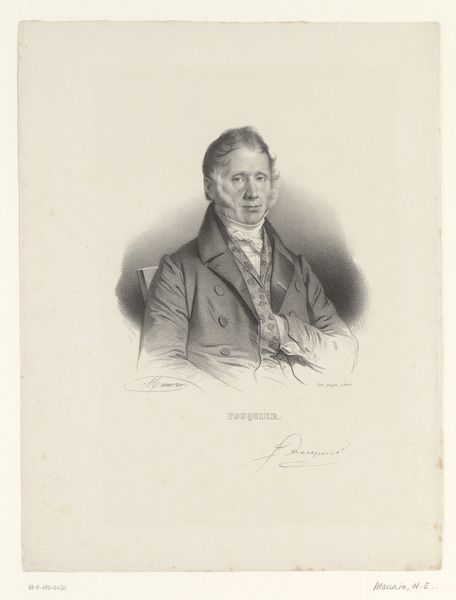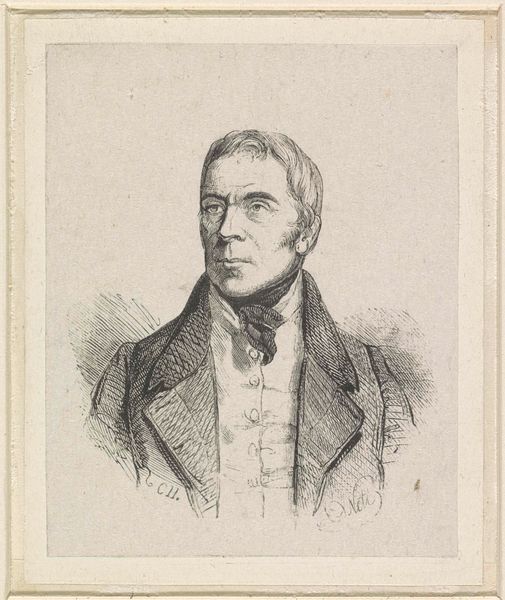
drawing, print, graphite
#
portrait
#
pencil drawn
#
drawing
# print
#
pencil sketch
#
pencil drawing
#
graphite
#
portrait drawing
#
realism
Dimensions: 76 mm (None) (billedmaal)
Curator: This compelling portrait, aptly titled "Portræt af en præst," which translates to "Portrait of a Priest," comes to us from the hand of F. Hendriksen, created sometime between 1874 and 1923. It's a print executed with graphite on paper, a medium that lends itself to striking detail. What’s your first impression? Editor: A study in contained energy! The cross-hatching creates this feeling like the subject is almost vibrating, restrained only by the oval frame and, perhaps, his own priestly stoicism. There's a kind of intensity in the eyes… a deep focus, maybe even a flicker of inner turmoil? Curator: Interesting. The oval, commonly used in portraiture, acts as a formal device, framing the subject in a tradition dating back to antiquity. In Christian iconography, the oval or mandorla symbolizes divine glory. Here, does it elevate the priest, or perhaps subtly confine him? The artist's choice becomes meaningful. Editor: Confine him, I think. Those repeated lines… it's as if the artist felt compelled to cage that look of knowing intensity. Look at the tight, thin lips, holding it all in. The garment itself, with its linear formality, it adds another layer. There's so much repression simmering here. Curator: Indeed. Consider also the light and shadow play across his face. Hendriksen expertly uses graphite to create depth and contour, especially around the eyes and cheekbones, enhancing that intensity you mentioned. It reflects not just his skill, but hints at an understanding of psychological depth in portraiture. Clergy were often viewed as pillars of the community, their faces became symbols loaded with societal expectations and judgment. Editor: Exactly. You see the formal representation, but the humanity almost fights its way to the surface. The eyes betray him, and the artist catches it, doesn't he? It becomes this really beautiful and tragic push-and-pull between inner life and outward presentation, captured so simply on paper. It resonates far beyond the depicted subject. Curator: I agree entirely. Hendriksen provides us not just with a record of a man, but an intimate glimpse into the burdens, or perhaps the hidden complexities, held beneath the cloth. Editor: It leaves you pondering the narratives we inherit and the stories our faces unwittingly tell. So powerful.
Comments
No comments
Be the first to comment and join the conversation on the ultimate creative platform.
